| South Pacific:
Naval Battle in the South Pacific
By Mike Bennighof, Ph.D.
October 2022
 While the Americans would label their exchange of carrier strikes with the Japanese in late October 1942 the Battle of the Santa Cruz Islands, the Imperial Japanese Navy took a much broader view. The Japanese Second and Third Fleets left Truk on 10 October and remained at sea until the 30th; had they not fought the Americans when they did, they might have kept up their troop transport operations even longer. While the Americans would label their exchange of carrier strikes with the Japanese in late October 1942 the Battle of the Santa Cruz Islands, the Imperial Japanese Navy took a much broader view. The Japanese Second and Third Fleets left Truk on 10 October and remained at sea until the 30th; had they not fought the Americans when they did, they might have kept up their troop transport operations even longer.
That gives a ready framework for the third chapter of Second World War at Sea: South Pacific, titled Naval Battle in the South Pacific (the Japanese name for this part of the campaign). We’ve been using an approach for a while now, in which long scenarios show entire operations, but there are also shorter ones broken down to highlight some of the key moments. The dramatic operations around Guadalcanal in October 1942 fit this format pretty much perfectly.
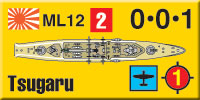 The Japanese decided on an aggressive operational tempo, to bring serious reinforcements to Guadalcanal: a full new division, replacements for the battered units already there, supporting tanks and artillery, and the supplies needed for all of this military might (plus the troops already starving on Starvation Island). Not just destroyers, but seaplane carriers (which had cranes capable of lifting vehicles and artillery pieces), an elderly light cruiser, a minelayer and large fast transports sent from Japan would help move the troops and cargo. Most of the Combined Fleet present at Truk (but not all, because this was a Japanese plan) set out to support them: five carriers (two big ones and three small ones), four fast battleships and an array of cruisers and destroyers. The Eighth Fleet, headquartered at Rabaul, would provide the ships actually making the transport runs and their direct escort; the Combined Fleet would also conduct both air and bombardment attacks to suppress the American air base at Henderson Field on Guadalcanal. The Japanese decided on an aggressive operational tempo, to bring serious reinforcements to Guadalcanal: a full new division, replacements for the battered units already there, supporting tanks and artillery, and the supplies needed for all of this military might (plus the troops already starving on Starvation Island). Not just destroyers, but seaplane carriers (which had cranes capable of lifting vehicles and artillery pieces), an elderly light cruiser, a minelayer and large fast transports sent from Japan would help move the troops and cargo. Most of the Combined Fleet present at Truk (but not all, because this was a Japanese plan) set out to support them: five carriers (two big ones and three small ones), four fast battleships and an array of cruisers and destroyers. The Eighth Fleet, headquartered at Rabaul, would provide the ships actually making the transport runs and their direct escort; the Combined Fleet would also conduct both air and bombardment attacks to suppress the American air base at Henderson Field on Guadalcanal.
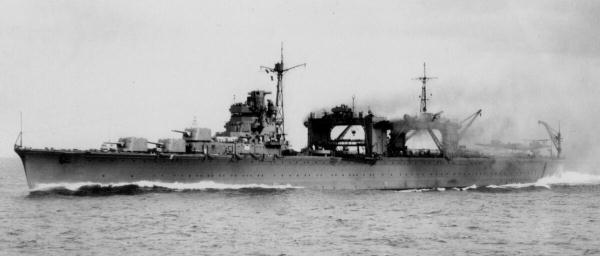
Seaplane carrier Nisshin’s aircraft-handling cranes would be central to the plan.
Despite the seemingly clear objective, to move the troops staged to Rabaul and the Shortland Islands down the New Georgia Sound to Guadalcanal, the Japanese concocted a complicated plan, because that’s how the Imperial Navy conducted its war. The Combined Fleet would not be combined, but operate as two commands: the Second Fleet to support the Eighth Fleet, and the Third Fleet to seek out and fend off any American response.
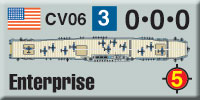 The Americans had their own intentions. They had some idea of Japanese plans, thanks to decoded radio intercepts, but more important to American actions would be the replacement of the timid Robert Ghormley with the aggressive Bill Halsey on 18 October, and the arrival of a second carrier task force a few days later. The Americans had tried to interfere with the Japanese efforts using surface forces, and won a victory over the Japanese escorting force at the Battle of Cape Esperance on the night of 11/12 October. But the Japanese convoy unloaded successfully, and the pace of reinforcement convoys did not miss even an hour. The Americans had their own intentions. They had some idea of Japanese plans, thanks to decoded radio intercepts, but more important to American actions would be the replacement of the timid Robert Ghormley with the aggressive Bill Halsey on 18 October, and the arrival of a second carrier task force a few days later. The Americans had tried to interfere with the Japanese efforts using surface forces, and won a victory over the Japanese escorting force at the Battle of Cape Esperance on the night of 11/12 October. But the Japanese convoy unloaded successfully, and the pace of reinforcement convoys did not miss even an hour.
What would ultimately make the difference would be the American reinforcement efforts, adding an Army regiment to the Marine division holding Henderson Field, and the fighting ability of the Marines who turned back the Japanese ground offensive. When Halsey’s carriers met the Japanese flattops at the end of the month, the Japanese scored a victory but they had not met their strategic objective. The Americans held on Guadalcanal.
In terms of game design, it all fits together pretty logically. We have one massive scenario, which few if any will ever play, covering the entire operation. Both sides get reinforcements as the game goes on, the big one being the Enterprise task force coming into play for the Americans.
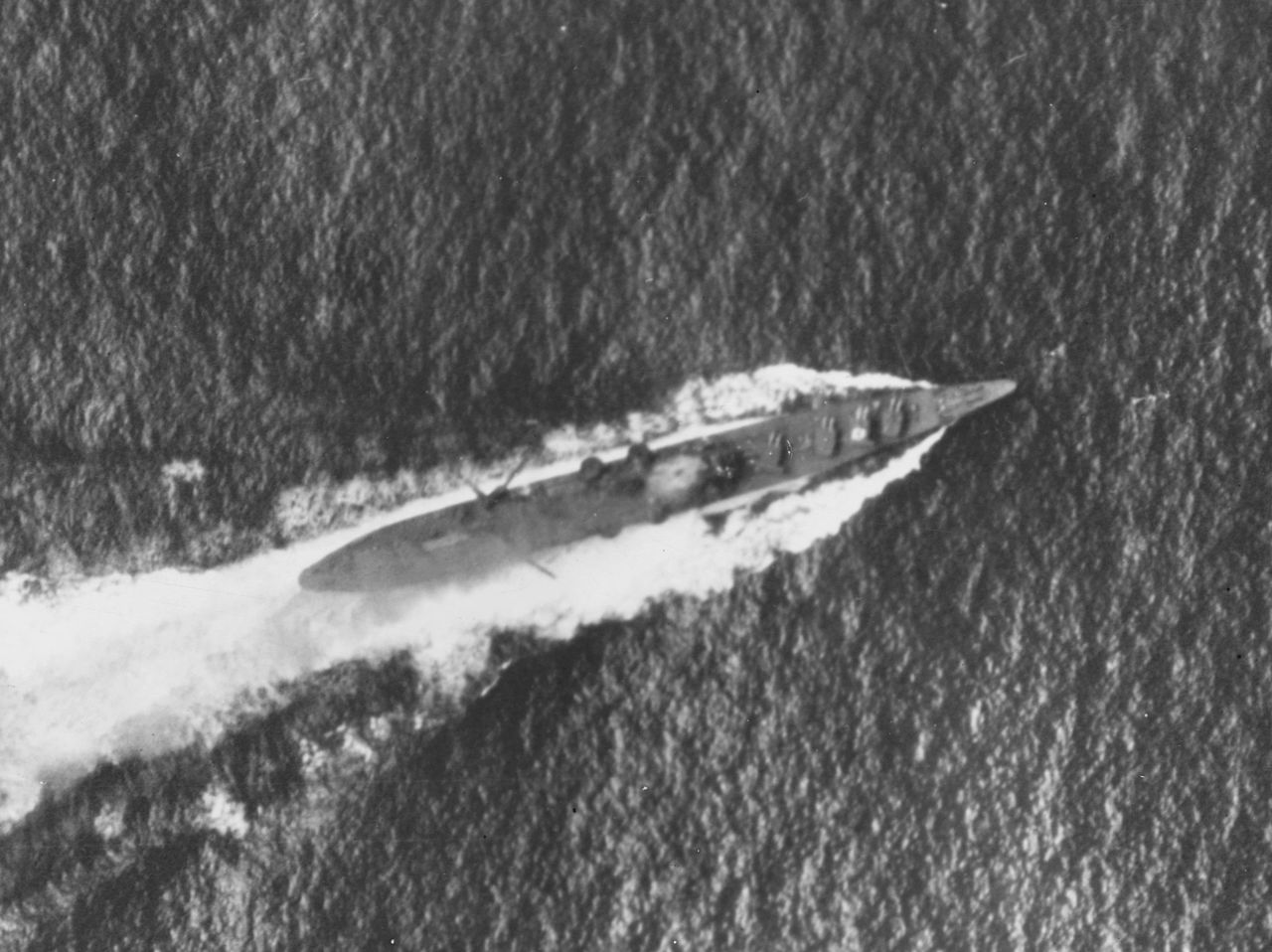
The Japanese cruiser Chikuma has just suffered a direct hit.
The exact situations of October 1942 aren’t likely to re-create themselves with the players in charge; splitting the First Air Fleet was probably a mistake on the part of the Japanese, as was holding back their surface forces rather than giving the overnight convoys an overwhelming escort. That’s one of the difficulties in game design (of any game): the balance of practical considerations and cultural imperatives. The transport runs were an Eighth Fleet operation, the support missions a Combined Fleet show. But Eighth Fleet reported to Combined Fleet; Isoroku Yamamoto had at times overridden his subordinates when it seemed imperative. And he had declared these missions imperative. Yet he did not simply assign heavier surface forces to Eighth Fleet.
 The scenarios are crafted to present the Japanese player with the ability to do these things, at a price. He or she can also try to commit the last reserves that Yamamoto held back at Truk (despite his literally tearful statement that he would apply all available force). That will allow the Hotel Yamato to for once shake loose of her moorings, along with the older battleship Mutsu and the pair of famed (and not all that useful) torpedo cruisers. The scenarios are crafted to present the Japanese player with the ability to do these things, at a price. He or she can also try to commit the last reserves that Yamamoto held back at Truk (despite his literally tearful statement that he would apply all available force). That will allow the Hotel Yamato to for once shake loose of her moorings, along with the older battleship Mutsu and the pair of famed (and not all that useful) torpedo cruisers.
We also break down the action with shorter operational scenarios, picking up the story on the cusp of the surface Battle of Cape Esperance, the further Japanese bombardment and transport missions that the Americans didn’t contest, and at a couple of stages of the carrier clash, the Battle of the Santa Cruz Islands. You get to make the decisions at all of the crucial points in the October Campaign. And more importantly, from my point of view anyway, these scenarios will actually see lots of play.
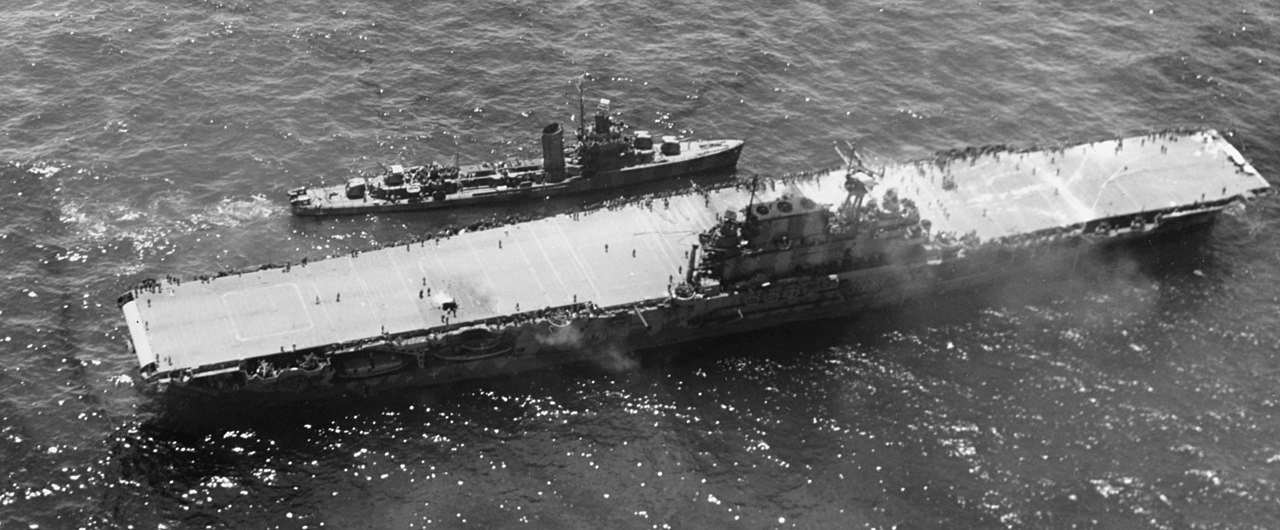
Hornet’s crew abandons ship.
All of those scenarios take place on the operational map, the one that shows the Solomon Islands chain and surrounding waters. Second World War at Sea games also include battle scenarios, and we have those for the fateful October, too. We get to use the special Ironbottom Sound tactical map for battles in, well, Ironbottom Sound. Plus some air attack scenarios that take place on the standard Tactical Map.
All told, Chapter Three: Naval Battle in the South Pacific has fifteen scenarios, five operational and ten battle scenarios. Most publishers, the smart ones anyway, would call it a day at that point, a complete game on the Battle of the Santa Cruz Islands. We’re not likely to make the smart decision, so it’s just one of five chapters in Second World War at Sea: South Pacific.
You can order South Pacific right here.
Please allow an extra four weeks for delivery.
Sign up for our newsletter right here. Your info will never be sold or transferred; we'll just use it to update you on new games and new offers.
Mike Bennighof is president of Avalanche Press and holds a doctorate in history from Emory University. A Fulbright Scholar and NASA Journalist in Space finalist, he has published a great many books, games and articles on historical subjects; people are saying that some of them are actually good.
He lives in Birmingham, Alabama with his wife and three children.
Want to keep Daily Content free of third-party ads? You can send us some love (and cash) through this link right here.
|
